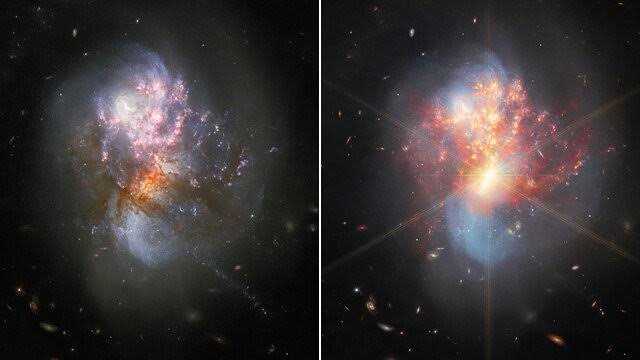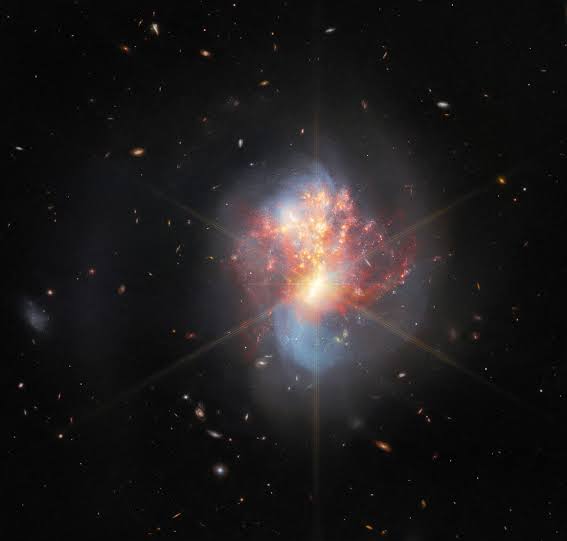The NASA/ESA/CSA James Webb Space Telescope captured this image of IC 1623, a pair of interfering galaxies in the constellation Cetus that are roughly 270 million light-years from Earth.
Galaxy merger describes what is taking place as the two galaxies in IC 1623 collide with one another. Their collision has resulted in a starburst that has produced stars more than 20 times faster than the Milky Way galaxy.
This system of interacting galaxies is a fantastic illustration of how effectively Webb can examine luminous galaxies because it is so brilliant in the infrared.

Use Of Webb’s Equipments
A group of astronomers used MIRI, NIRSpec, and NIRCam, three of Webb’s cutting-edge scientific equipment, to observe IC 1623 in the infrared spectrum.
The wealth of information they produced as a result of doing this will allow the astronomy community as a whole to thoroughly study how Webb’s ground-breaking capabilities can aid in unraveling the complex relationships in galactic ecosystems.
Related: Webb Provides Never-before-seen Details Of The Early Universe
Significance Of This Observation
These data will serve as a foundation for additional Webb observations of galactic systems. They are also supported by data from other observatories, including the NASA/ESA Hubble Space Telescope.
Hubble and other space telescopes have already taken pictures of the merging of these two galaxies, which has long piqued the interest of astronomers.
The furious, ongoing starburst is producing a lot of infrared emission, and the merging galaxies may very well be creating a supermassive black hole as we speak.
Problem In Further Observation
A substantial belt of dust has blocked these significant discoveries from being seen by telescopes like Hubble. NIRCam and MIRI data were combined to produce the amazing image above, but Webb’s infrared sensitivity and resolution at those wavelengths enable it to see past the dust.
It turns out that Webb’s diffraction spikes on the galaxy’s surface can be seen because of the galaxy merger’s brilliant and compact luminous centre.
The eight-pronged, snowflake-shaped diffraction spikes are the result of the interplay between starlight and the physical design of the telescope. Webb’s discoveries’ spiky structure is particularly evident in images containing dazzling stars, as his initial deep field shot.
